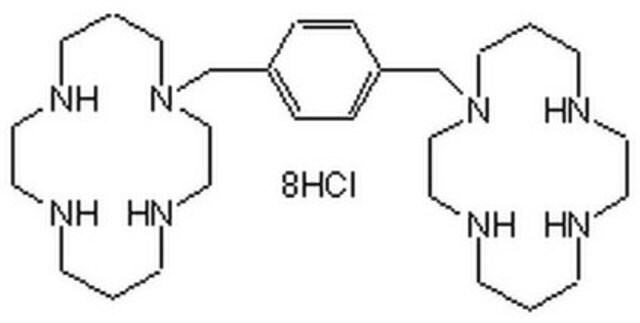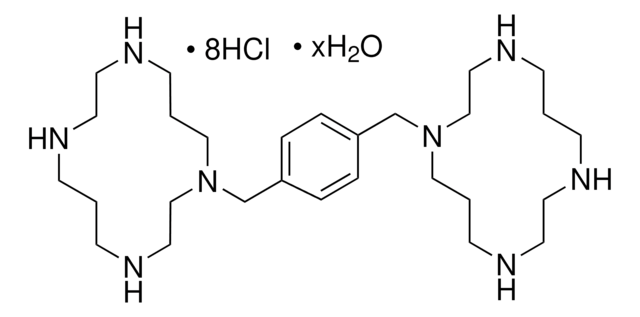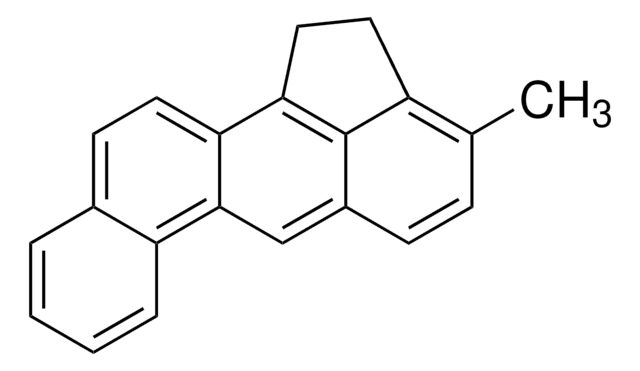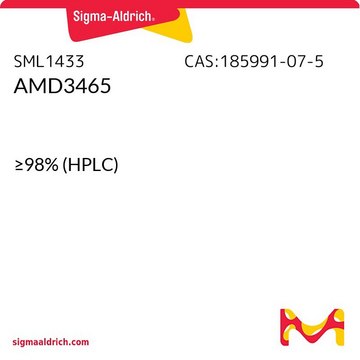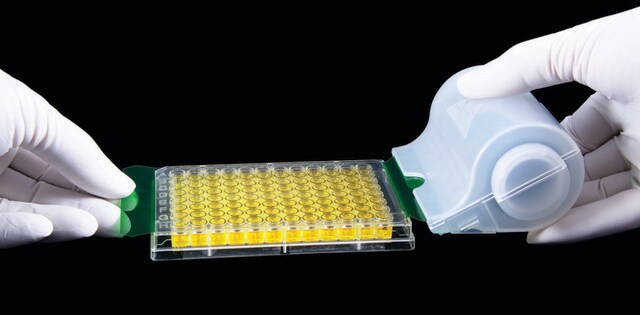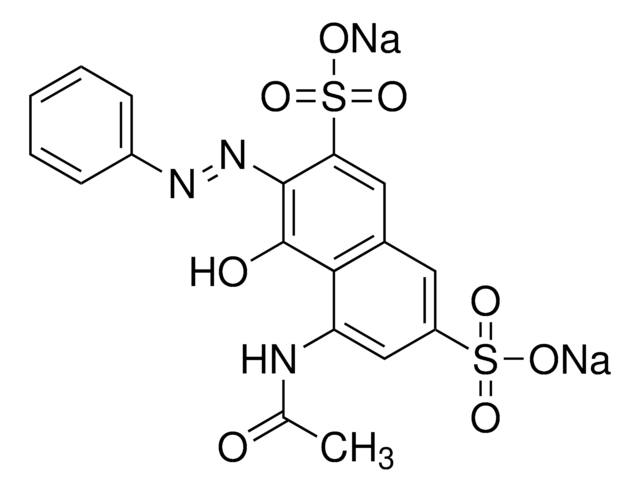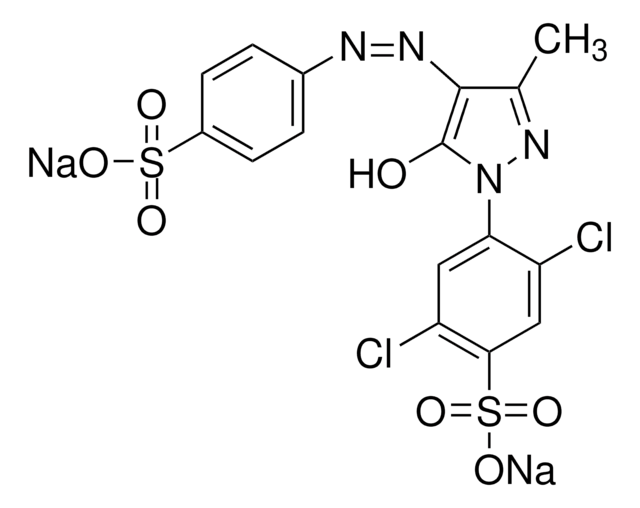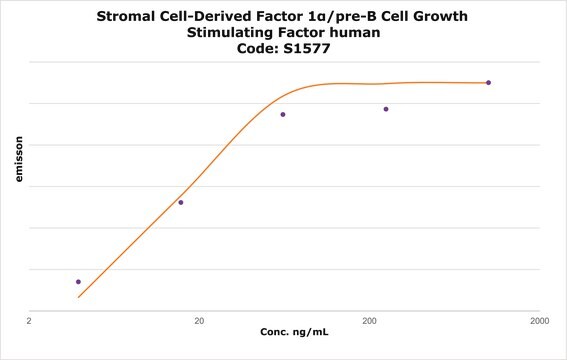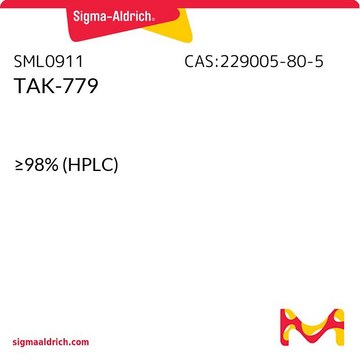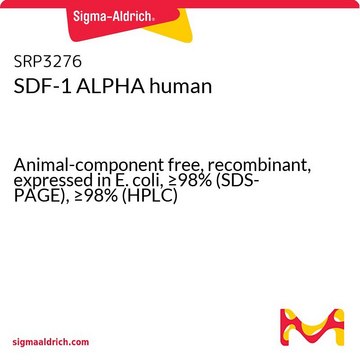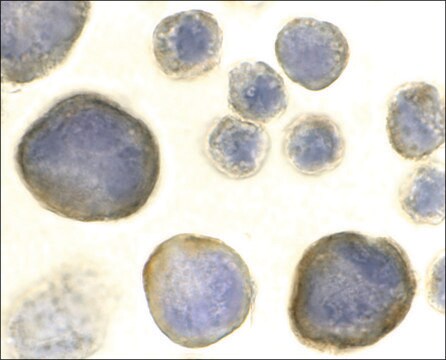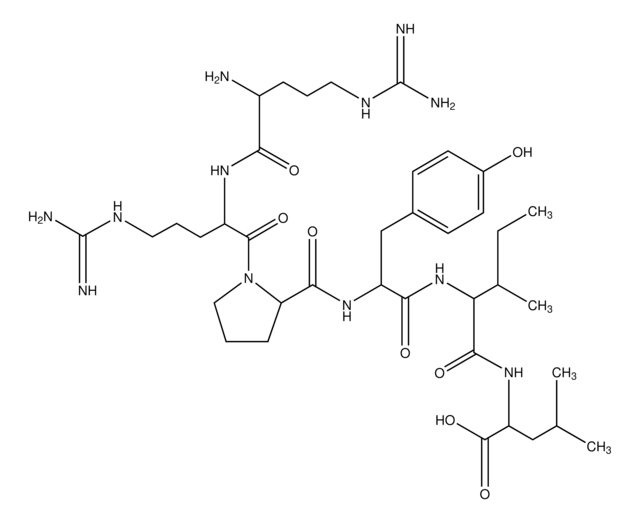A5602
AMD3100 octahydrochloride hydrate
≥97% (NMR), solid, CXCR4 antagonist
Synonym(s):
1,1′-[1,4-Phenylenebis(methylene)]bis-1,4,8,11-tetraazacyclotetradecane octahydrochloride, JM3100, Plerixafor, SID791
About This Item
Recommended Products
Product Name
AMD3100 octahydrochloride hydrate, ≥97% (NMR), solid
Quality Level
Assay
≥97% (NMR)
form
solid
storage condition
desiccated
solubility
H2O: ≥10 mg/mL, clear
originator
Sanofi Aventis
storage temp.
−20°C
SMILES string
Cl[H].Cl[H].Cl[H].Cl[H].Cl[H].Cl[H].Cl[H].Cl[H].[H]O[H].C1CNCCNCCCN(CCNC1)Cc2ccc(CN3CCCNCCNCCCNCC3)cc2
InChI
1S/C28H54N8.8ClH.H2O/c1-9-29-15-17-31-13-3-21-35(23-19-33-11-1)25-27-5-7-28(8-6-27)26-36-22-4-14-32-18-16-30-10-2-12-34-20-24-36;;;;;;;;;/h5-8,29-34H,1-4,9-26H2;8*1H;1H2
InChI key
GKFHDCZYJHUPEN-UHFFFAOYSA-N
Application
Biochem/physiol Actions
Features and Benefits
Storage Class Code
11 - Combustible Solids
WGK
WGK 3
Flash Point(F)
Not applicable
Flash Point(C)
Not applicable
Personal Protective Equipment
Regulatory Listings
Regulatory Listings are mainly provided for chemical products. Only limited information can be provided here for non-chemical products. No entry means none of the components are listed. It is the user’s obligation to ensure the safe and legal use of the product.
JAN Code
A5602-VAR:
A5602-5MG:
A5602-IP:
A5602-BULK:
Choose from one of the most recent versions:
Already Own This Product?
Find documentation for the products that you have recently purchased in the Document Library.
Customers Also Viewed
Our team of scientists has experience in all areas of research including Life Science, Material Science, Chemical Synthesis, Chromatography, Analytical and many others.
Contact Technical Service